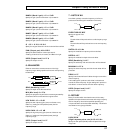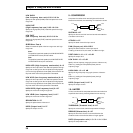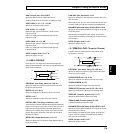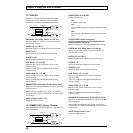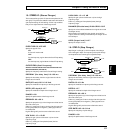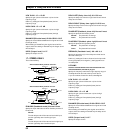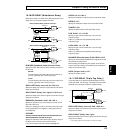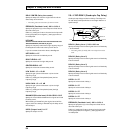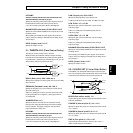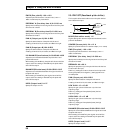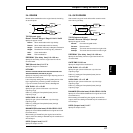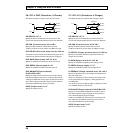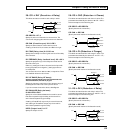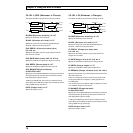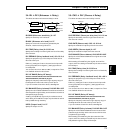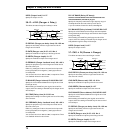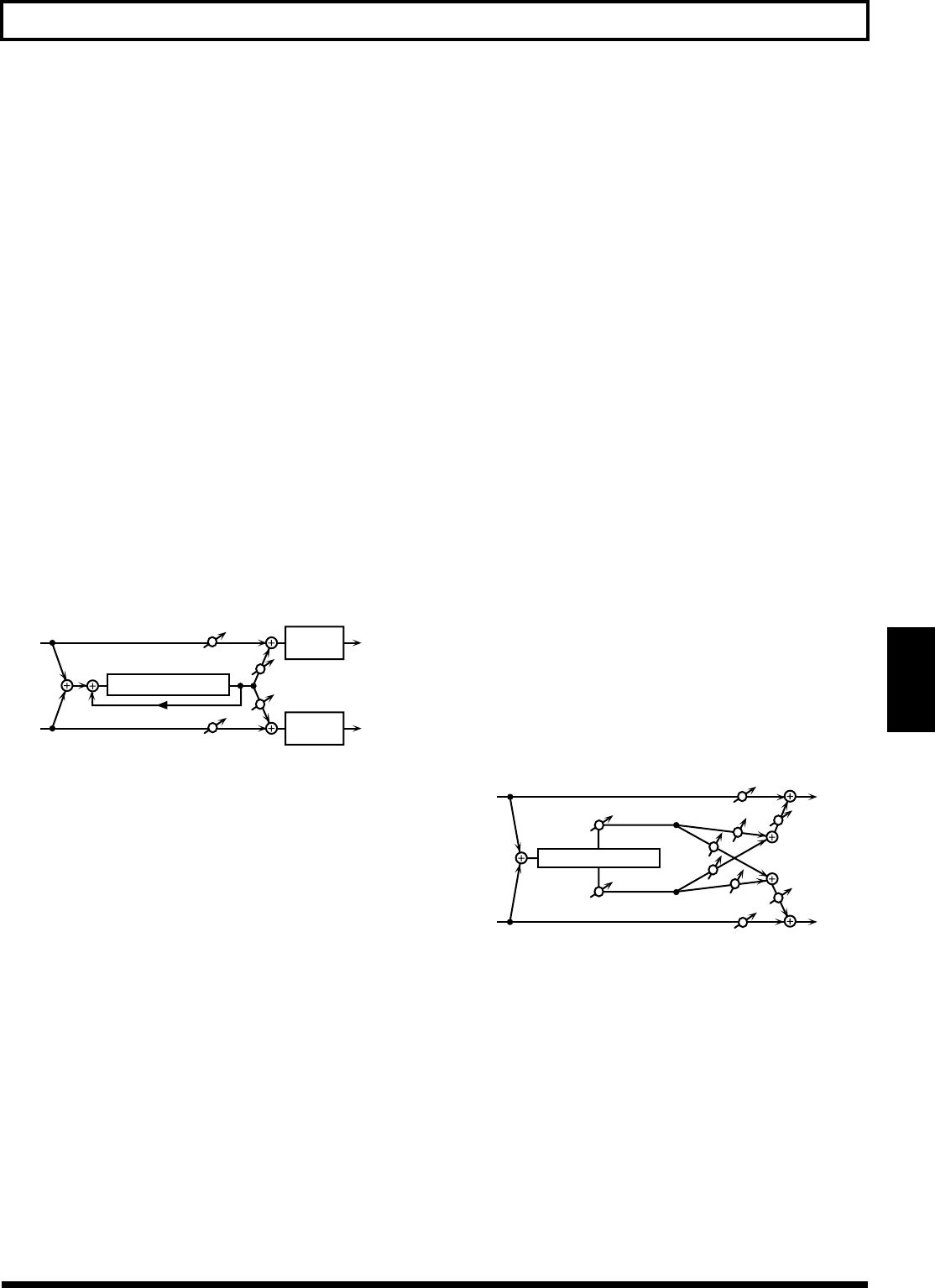
65
Chapter 6 Using the Built-in Effects
Chap.
6
HF DAMP
200/250/315/400/500/630/800/1000/1250/1600/2000/2500/3150/
4000/5000/6300/8000 (200–8000 Hz), Bypass
Specify the frequency at which the high frequency range of
the delayed sound returned to the input will be cut.
If you do not want the sound to be cut, select Bypass.
BALANCE (Effect balance) D100:0E–D0:100E
Specify the volume balance between the original sound and
the delay sound.
With a setting of D100:0E only the original sound will be
output, and with a setting of D0:100E only the delay sound
will be output.
LEVEL (Output level) 0–127
Specify the output volume.
21: TIMECTRL-DLY (Time Control Delay)
This lets you control a delay time in real time.
When the delay time has been made to change, the delay
time and pitch of the delayed sound change at the speed set
for Acceleration. Depending on the settings you use, you can
achieve some really tricky effects with this.
fig.6-24a
DELAY (Delay time) 200–1000 ms #
Specify the time delay from the original sound until the delay
sound is heard.
FEEDBACK (Feedback level) -98–+98 %
Specify the proportion (%) of the delay sound that is to be
returned to the input.
Positive (+) settings will return the sound to the input with
the original phase, while negative (-) settings produce an
inverted phase.
ACCELERATION 0–15
Specify the time over which the current delay time will
change to the newly-specified delay time when the delay
time is modified. The speed of the pitch change will be
proportionate to the delay time.
HF DAMP
200/250/315/400/500/630/800/1000/1250/1600/2000/2500/3150/
4000/5000/6300/8000 (200–8000 Hz), Bypass
Specify the frequency at which the high frequency range of
the delayed sound returned to the input will be cut.
If you do not want the sound to be cut, select Bypass.
PAN (Output pan) L64–0–R63
Specify the stereo position of the delay sound.
A setting of L64 is far left, 0 is center, and R63 is far right.
LOW GAIN -15–+15 dB
Specify the gain (amount of boost or cut) for the low
frequency range.
Positive (+) settings will emphasize (boost) the low
frequency range.
HIGH GAIN -15–+15 dB
Specify the gain (amount of boost or cut) for the high
frequency range.
Positive (+) settings will emphasize (boost) the high
frequency range.
BALANCE (Effect balance) D100:0E–D0:100E
Specify the volume balance between the original sound and
the delay sound.
With a setting of D100:0E only the original sound will be
output, and with a setting of D0:100E only the delay sound
will be output.
LEVEL (Output level) 0–127
Specify the output volume.
22:
2VOICE-P.SFT (2 Voice Pitch Shifter)
Pitch Shifter is an effect that shifts the pitch of the original
sound. 2-voice-pitch-shifter has two pitch shifters, and is able
to add two pitch-shifted sounds to the original sound.
fig.6-25
MODE (Pitch shifter mode) 1–5
Higher settings will cause the response to be slower, but the
pitch will be steadier.
COARSE A (Coarse pitch A) -24–+12 #
Specify the pitch shift amount in semitones for pitch shift A.
(-2–+1 octave)
COARSE B (Coarse pitch B) -24–+12
Specify the pitch shift amount in semitones for pitch shift B.
(-2—+1 octave)
FINE A (Fine pitch A) -100–+100
Adjust the pitch shift amount in 2-cent units (1 cent = 1/
100th of a semitone) for pitch shift A.
L in
R in
L out
R out
2-Band
EQ
Balance E
Balance E
Balance D
Balance D
2-Band
EQ
Feedback
Time Control Delay
L in
R in
L out
R out
2Voice Pitch Shifter
Level Balance A
Balance E
Balance D
Balance E
Balance D
Level Balance B
PanB R
PanA L
PanA R
PanB L



